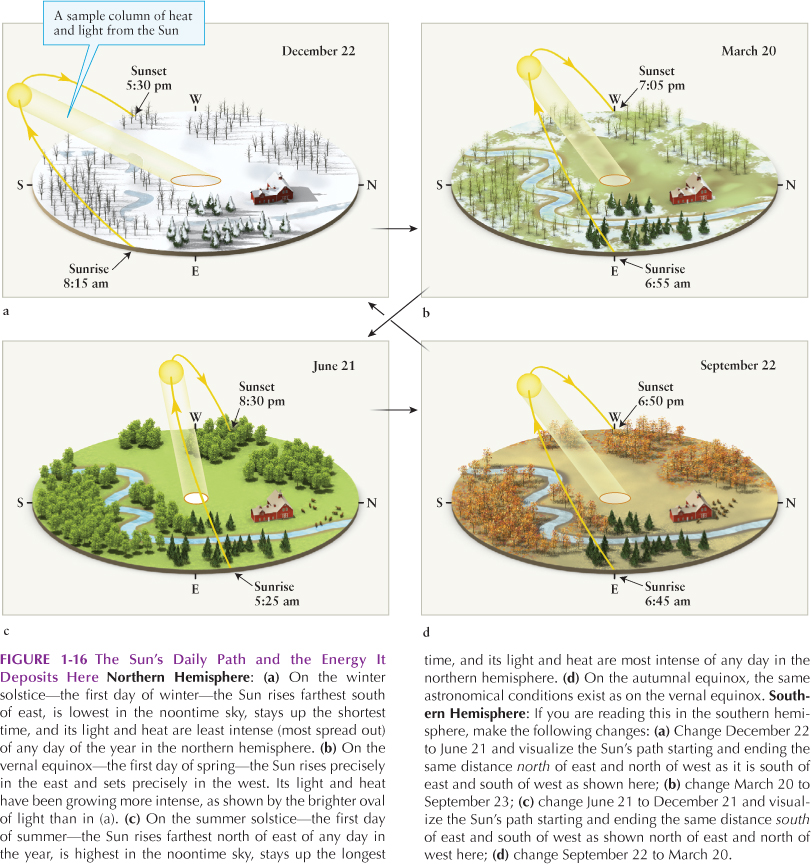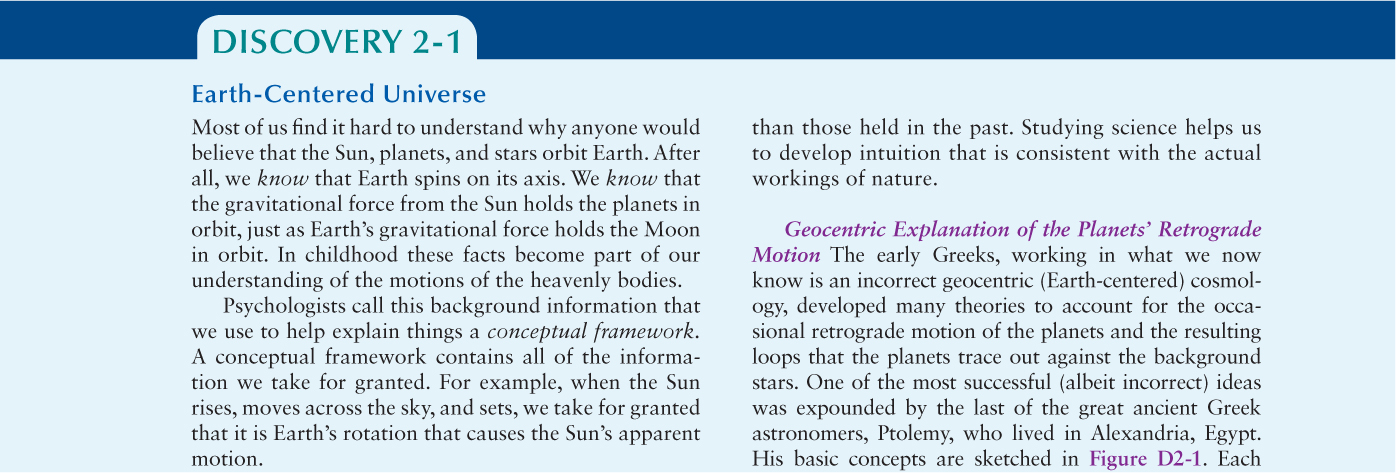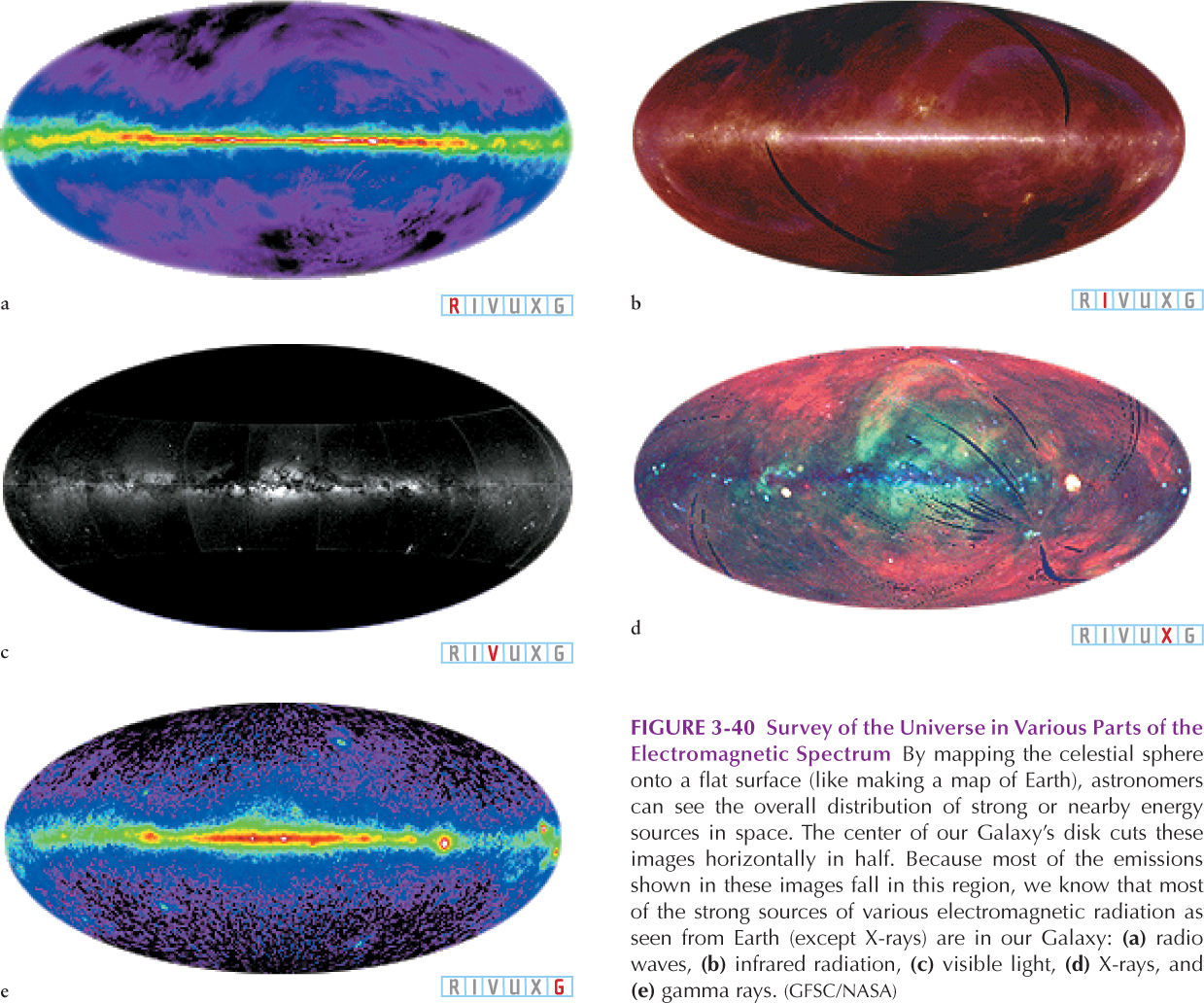PROVEN FEATURES SUPPORT LEARNING
What Do You Think? and What Did You Think? questions in each chapter ask students to consider their present beliefs and actively compare them with the correct science presented in the book. Numbered icons mark the places in the text where each concept is discussed. Encouraging students to think about what they believe is true and then working through the correct science step-
Focus Question 2-6
We saw in Chapter 1 that the Moon’s orbit around earth is not circular. Where in its orbit is the Moon moving fastest, and where is it moving slowly?
Focus Questions about important concepts are presented in most sections of the book. These questions encourage students to frequently test themselves and correct their beliefs before errors accumulate. For example, after learning about inertia in Section 2-
Dynamic art Summary figures appear throughout the book to show either the interactions between important concepts or the evolution of important objects. For example, the location of the Sun in the sky, which varies over the seasons, as do the corresponding intensity of the light and the appropriate ground cover, is shown in a sequence of drawings combined into one figure.
Learning objectives underscore the key chapter concepts.
Section headings are brief sentences that summarize section content and serve as a quick study guide to the chapter when reread.
WHAT DO YOU THINK?
 Can Earth’s ozone layer, which has been partially depleted, be naturally replenished?
Can Earth’s ozone layer, which has been partially depleted, be naturally replenished? Do we see all parts of the Moon’s surface at some time throughout the lunar cycle?
Do we see all parts of the Moon’s surface at some time throughout the lunar cycle?
WHAT DID YOU THINK?
 Can Earth’s ozone layer, which has been partially depleted, be naturally replenished? Yes. Ozone is created continuously from normal oxygen molecules by their interaction with the Sun’s ultraviolet radiation.
Can Earth’s ozone layer, which has been partially depleted, be naturally replenished? Yes. Ozone is created continuously from normal oxygen molecules by their interaction with the Sun’s ultraviolet radiation. Do we see all parts of the Moon’s surface at some time during the lunar cycle? No. Because the Moon’s rotation around Earth is synchronous, we always see the same side. The far side of the Moon has been seen only from spacecraft that pass or orbit it.
Do we see all parts of the Moon’s surface at some time during the lunar cycle? No. Because the Moon’s rotation around Earth is synchronous, we always see the same side. The far side of the Moon has been seen only from spacecraft that pass or orbit it.

xiii

Discovery boxes provide deeper coverage of certain topics. In previous editions, some of this material was found only in the appendices but, in response to instructors using the text, key concepts have been pulled into the chapter where they appear in context but still remain as optional reading assignments.
Insight Into Science boxes are brief asides that relate topics to the nature of scientific inquiry and encourage critical thinking.
Wavelength tabs with photographic images show whether an image was made with radio waves (R), infrared radiation (I), visible light (V), ultraviolet light (U), X rays (X), or gamma rays (G).

xiv
Review and practice material
Summary of Key Ideas is a bulleted list of key concepts.
What Did You Think? questions at the end of each chapter answer the What Do You Think? questions posed at the beginning of the chapter.
Review Questions and Advanced Questions help the students understand the chapter material.
Discussion Questions offer interesting topics to spark lively, insightful debate.
NEW: Got It? Questions ask students about either big picture concepts related to the chapter or questions associated with common misconceptions about that material (or both!).